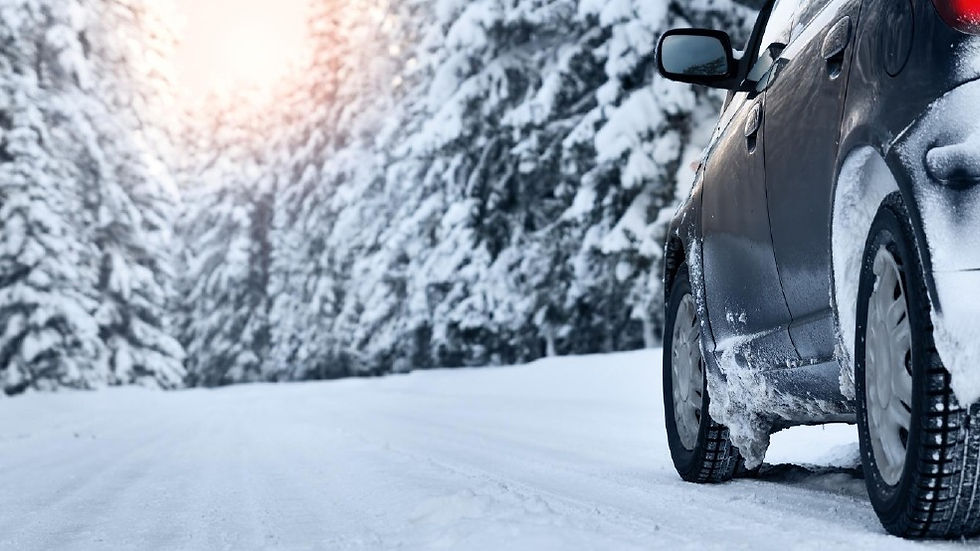Safe Winter Driving Tips

With the effects of winter hitting Vancouver and the northern hemisphere, very great care should be taken when driving.
We at West Coast Turbos compiled a few tips to get by these treacherous conditions while on the road.
Using the right tires
Picking the correct tires for winter make a huge difference between getting to where you want safely and skidding and hitting something or someone.
For heavily snowy areas, similar to wearing appropriate winter boots, your car would also need appropriate tires. Your all-season radials will have to be replaced into something more winter appropriate (Good recommendations would be the Goodyear Ultra Grip or the Bridgestone Blizzak). The winter appropriate tires are manufactured with a much softer material which enables your tires to remain flexible even at below zero temperatures. With more flexibility at lower temperatures comes better ability to traverse through the uneven contours of the whatever terrain you are treading.
Additionally, the winter tires come with sipes (teeth-like small grooves on the surface) that enable them to tread through slush and gives better grip on the road. For smoother surfaces, studded tires are advisable to better ensure control while driving.
Mixing and matching of different tires is highly inadvisable, as this would result in a very imbalanced grip and stability.
Winter-fy your vehicle
Winter is coming, and your car needs to be equipped with all necessary components. A good starting point would be the fitting of good winter rubber on your vehicle. One very important tip is to keep your fuel tank at least half-full all the time.
It would save you a lot of time, heartbreak, and cash from a frozen gas line resulting from condensation of water vapour due to your tank being empty.
Make sure you have your antifreeze and windshield washer reservoirs at optimum levels, sometimes the smallest overlook could result in dire consequences.
Ensure your windshield (not just a tiny part of it), side windows, rear windows, side mirrors, and your headlights are as clean as possible. Improving visibility to highest degree should be maintained while on the road during winter. The chances of hitting pedestrians, sledders or animals are very high during this time.
For diesel engines, an engine block heater, is very much advisable, especially if you are in the much colder areas.
In older cars, the use of the handbrake is ill-advised, as this could freeze up due to the off chance of getting wet.
Be stocked up, always
Apart from the padded winter apparel and food, other equipment could prove to be advantageous to you on the off chance of being stranded. Flares, flashlights, glow sticks, shovels, jumper cables, snow brushes, blankets, first aid kits, sand, and spare tires all are good items to have and not need rather than need and not have.
It would be very helpful if you use a reflective jacket on the event you're stranded in the middle of nowhere. A greater visibility could be achieved by attaching a brightly coloured item on your radio antenna.
Keep in mind, during winter the daylight hours are a lot shorter and visibility is further affected due to that.
Keep your ride clean
Maintaining a clean car during winter is especially more difficult than any other time of the year. One of the main reasons it being cold outside. But we cannot really stress how important it is to maintain a clean car during winter. Compacted snow could slide off trunks of vehicles and when at freeway speeds could lead to major damages in the windshield of other vehicles.
Another good reason to keep a clean car is to prevent the formation of rust. With the addition of salt in some places, which can result in catastrophic consequences in your vehicle. A layer of wax will help prevent these issues.
Usage of lights and visibility in snowy conditions
When using lights, as mentioned before it's always better to keep it clean.
Another tip is to always stick to your low beams or fog lamps. Usage of high beams although seems like a good idea, would end up with snow being reflected back to you. This would end up further hindering your visibility.
Prior route checking
Why not utilise the marvels of modern technology and plan your route ahead prior to embarking on a journey. You can always check traffic updates, blocked roads. Some areas only have one point of entry and if there's an issue there, you could be heading into one tedious night. Save yourself the trouble check the status of the roads and traffic before leaving. Some websites offer live camera feeds, use that to your advantage.
Slow and steady
You can follow all the instructions mentioned above to the letter. But it would be to no avail if you drive unsafely.
Drive slowly, take more time when doing necessary actions like braking or changing lanes.
On the off-chance of skidding, it's best to stop braking and turn your wheel into the slide rather than away from it and slowly try regaining control of it.
This is a very difficult task to manoeuvre, it would be a good idea to get some practice. An empty parking lot with snow will prove to be a good training ground.
Stay safe
We at West Coast Turbos wish you all the best in your journeys through the great white snow. Stay safe.
